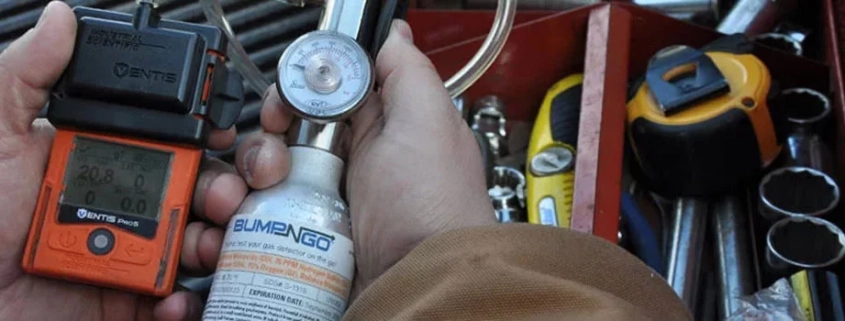Why Are Crash Tests Performed on Portable Gas Detectors?
Çarpma testi nedir?
Impact test, It is a routine procedure that involves passing a known charge of gas across the cells of a gas detector to check whether they are working properly.
The device controls the detector's alarm functions by passing gas, creating a gas presence condition.
This function test is for checking purposes only and does not change the measurement accuracy of the device in any way.
Origin of functional testing
Before the introduction of limited space standards, portable gas detectors contained analog needles or LED displays. These systems were originally used to drop zones during maintenance operations or to detect high concentrations of explosive gases or oxygen-deficient atmospheres in mines. The quality of these devices has led manufacturers to recommend daily calibration to check their proper functioning and accuracy.
The worldwide proliferation of portable gas detectors has become significant since limited space regulations were introduced in the USA in 1993 and in the UK in 1997. However, daily calibration was becoming a huge economic burden. Industries then asked manufacturers to come up with a solution that would simplify their daily work. Because, gas testing for detectors They came up with the idea. This was a quick and easy way to check if the device was working properly before use. The term “crash testing” or “functional testing” has entered the lexicon of portable gas detector manufacturers and users.
Why is functional testing important in gas detectors?
The environment in which the device is used will determine how well it works. In fact, gas detectors are subject to numerous parameters, such as ambient humidity and dust, which can clog the filter in the detection cells. They are often used in harsh conditions and are subject to shocks and damage that are not always visible to the naked eye. Functional testing remains the easiest and safest way to check whether a detector is working correctly.
How are functional tests performed?
There are two ways to perform these functional tests. The first is to do it manually by connecting a standard gas cylinder to the detector through a calibration cap. Then, enter the menu and follow the instructions specified on the device and in the user manual to perform the operation. This is not the easiest procedure and is not used often.
To facilitate these tests, manufacturers have developed automated stations (Docking Stations) that perform these tests according to the frequency defined by the company's internal policies. These stations prevent operators from spending a lot of time performing this operation and do not require training. Just place the detector in the station. The station will then tell the operator whether the test passed or failed.
What are the risks of not having a crash test?
Relying on the iNet solution, Industrial Scientific conducted numerous studies and analyzes to determine the reliability of the crash tests. To do this, they took 1 billion concentration data records, 4.7 million functional test records, 1.1 million calibrations and 2.5 million alarms. The results were surprising: the failure rate of a daily crash test was 0.3%, or three out of every 1,000 detectors. By increasing the crash test frequency to 20 days, the failure rate is multiplied by 2.



